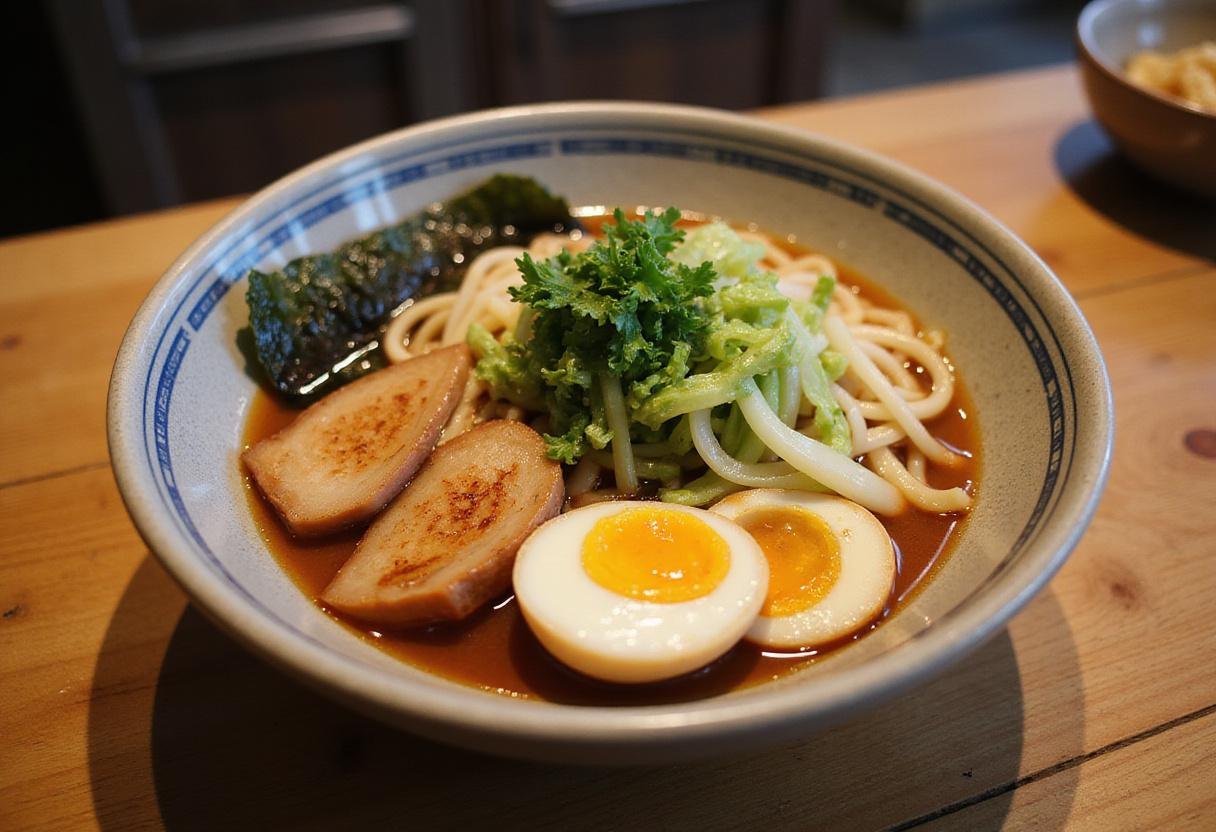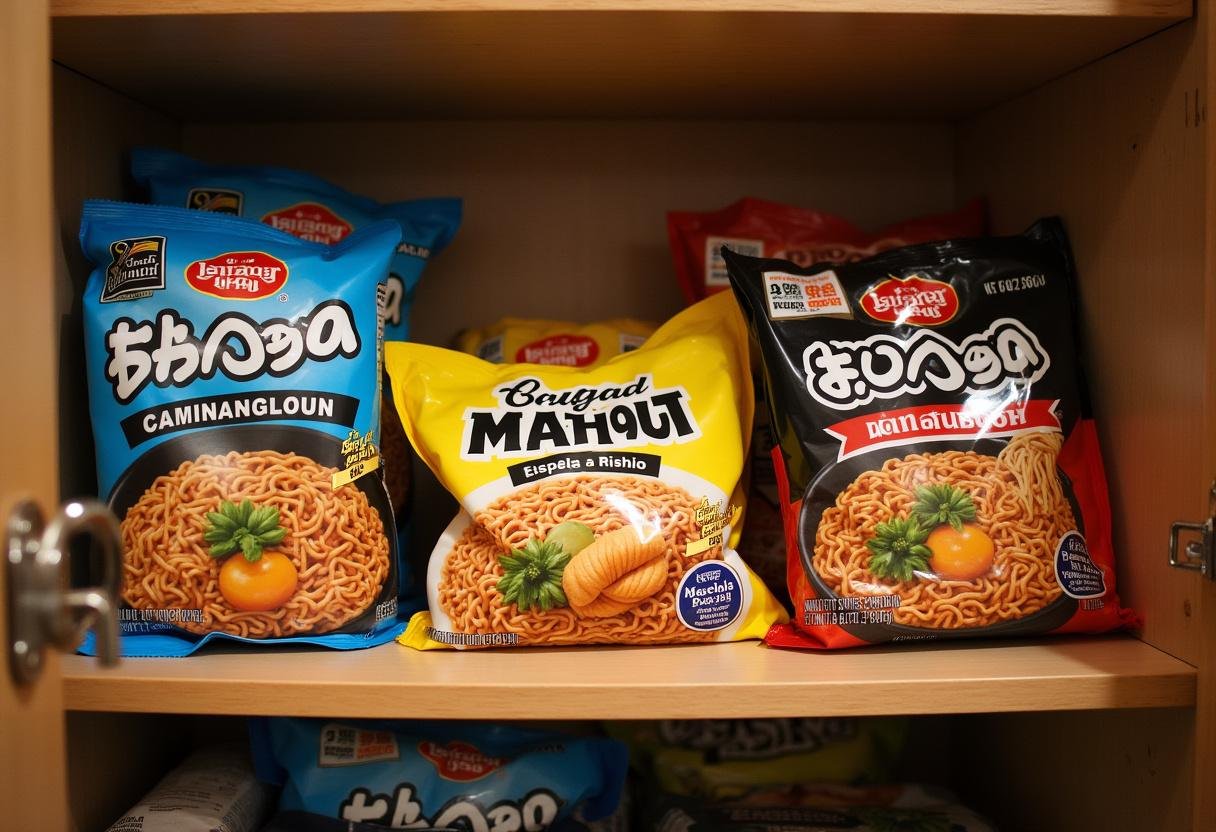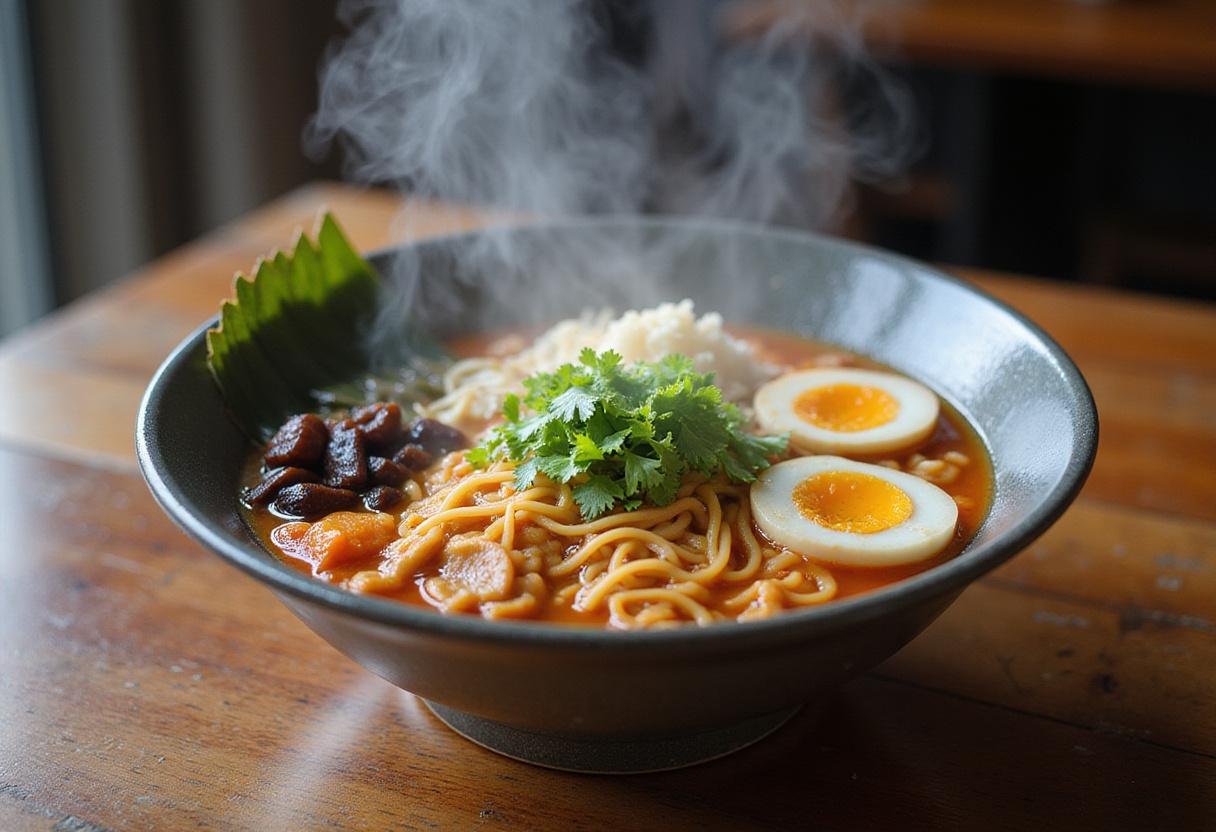Ramen Shelf Life Facts: A Comprehensive Guide to Ramen’s Longevity 🍜🛒✨
1. Introduction

Ramen, a globally cherished dish, offers comforting flavors and endless versatility. Yet, a crucial aspect often overlooked is understanding the shelf life of ramen noodles. Knowing how to properly store ramen and recognizing signs that indicate whether your ramen has expired is essential for both safety and enjoyment. If you love to eat, you might also enjoy these delicious recipes! In this comprehensive guide, we will delve into the world of ramen shelf life, exploring pertinent questions like “does ramen expire?” and “do ramen noodles go bad?” We’ll provide practical tips to ensure your ramen experience is always fresh and flavorful. Discover how to maximize the shelf life of your favorite instant noodles and homemade varieties.
2. What Is Ramen?
Ramen noodles are crafted from wheat flour, water, salt, and a special alkaline mineral water known as kansui, which gives them their characteristic texture and flavor. Traditionally, ramen is served in a rich, savory broth, complemented by a variety of toppings such as meats, vegetables, and eggs. The combination of these elements produces a deeply satisfying and comforting meal. Curious about other delicious noodle dishes? Check out this recipe for Spicy Grilled Shrimp Tacos that offers equally satisfying taste! After getting familiar with ramen’s composition, let’s address the burning question: does ramen expire, and what factors affect its longevity?
3. How Long Does Ramen Last?

Typically, instant ramen noodles can last between 6 months to 2 years beyond their expiration date if stored correctly. However, the actual shelf life can vary depending on storage conditions and the ingredients used. It’s crucial to check the packaging for specific expiration dates and ensure that the packaging is intact. If there are no visible damages, the noodles generally remain good as long as they are stored in a cool, dry place. Remember, the key to preserving ramen is avoiding moisture and extreme temperatures. To learn new dinner ideas, you should check these dinner recipes!
Step 1: Check Expiration Dates
One of the first and most straightforward steps in determining ramen’s safety is carefully checking the expiration date. Most manufacturers clearly indicate a “Best By,” “Use By,” or simply an “Expiration” date on the packaging. This date serves as a crucial guideline for optimum freshness and quality. While ramen may still be safe to consume after this date, its texture and flavor may begin to degrade. A detailed reading of the packaging can provide information on storage tips of ramen.
4. Signs Of Spoilage In Ramen Noodles

Step 2: Look for Signs of Spoilage
When asking, “do ramen noodles go bad?”, one should consider visual and olfactory clues. Start by examining the noodles for any unusual discoloration, such as dark spots or a faded appearance. Then, give them a sniff to check for any off-putting or stale smells that may indicate expired noodles. Also, you can check these reddit forum to learn more! If the noodles feel unusually hard or brittle when squeezed, it’s another sign that they may no longer provide a satisfactory eating experience. These are crucial steps in determining if your ramen is still safe to eat. If you notice any of these signs, it’s best to err on the side of caution and discard the ramen.
5. Storing Ramen Noodles
Proper storage is key to prolonging ramen’s shelf life and ensuring that it remains fresh for as long as possible. Ideally, keep your ramen noodles in their original, unopened packaging. For an extra layer of protection, especially if the original packaging is damaged, consider transferring the noodles to an airtight container. This helps stave off exposure to moisture, air, and pests, all of which can accelerate spoilage and affect the quality of your ramen. Always store ramen noodles in a cool, dry place, away from direct sunlight and fluctuating temperatures.
Step 3: Making Fresh Ramen Noodles at Home

If you’re feeling adventurous and want to elevate your ramen experience, consider making fresh ramen noodles at home! Using high-quality ingredients and mastering the right techniques can significantly enhance the taste and texture of your meal compared to store-bought, shelf-stable options. Fresh noodles typically only last about a week in the refrigerator due to their high moisture content and lack of preservatives, so plan to consume them quickly! Always store homemade noodles in an airtight container in the refrigerator to maintain their freshness. Looking for a tasty side dish to accompany your homemade ramen? Try these Baked Parmesan Zucchini Chips for a delightful crunch!
6. Can You Freeze Ramen Noodles?
You may be thinking, “can I freeze my ramen noodles for longer storage?” While it’s technically possible to freeze ramen noodles, it’s generally not recommended for instant ramen noodles as the freezing process can alter their texture and flavor. Instead, freezing is a more viable option for homemade ramen noodles. If you choose to freeze them, ensure they are properly portioned, well-wrapped in plastic wrap, and stored in an airtight freezer-safe container to prevent freezer burn. Properly frozen homemade ramen noodles can last for up to a month. However, be aware that the texture may still change slightly upon thawing. Before freezing, consider cooking these Herb Lemon Grilled Chicken
7. Creative Ramen Recipes To Try

Once you understand how to properly store ramen noodles and assess their freshness, it’s time to explore the countless delicious recipes that await you! From the rich and creamy depths of classic Tonkotsu ramen to the spicy kick of Kimchi ramen, experimenting with different flavors and ingredients can truly elevate your ramen experience. Don’t hesitate to mix in a variety of fresh vegetables, proteins like grilled chicken or tofu, and flavorful toppings like scallions, nori seaweed, and marinated eggs to create your ultimate ramen masterpiece. Also, Grilled Vegetable Quesadillas are another great side dish. The possibilities are truly endless!
8. FAQ
Q: Does ramen expire?
A: Yes, ramen does expire. Most instant ramen packages come with a “Best By” or “Expiration” date. While it typically remains edible for some time past its expiration date if stored correctly, it is best to consume it before this date for optimal quality and flavor.
Q: Do ramen noodles go bad?
A: Yes, ramen noodles can go bad. Signs include unusual or off-putting smells, visible discoloration, or an excessively dry and brittle texture. If you notice any of these signs, it’s best to discard the noodles.
Q: How long can I keep ramen noodles?
A: Instant ramen noodles can typically last between 6 months to 2 years if stored properly in a cool, dry place. Always check the packaging for specific expiration dates and storage instructions. You can also try to check these recipes.
Q: Can I freeze ramen noodles?
A: Yes, but freezing is best for homemade ramen noodles rather than instant ramen. Ensure they are well-wrapped and stored in an airtight container to prevent freezer burn and maintain their texture.
9. Conclusion
Understanding ramen shelf life is crucial for making the most out of this delicious and versatile dish. From diligently checking expiration dates to being vigilant about recognizing spoilage signs, knowing how to properly handle and store your ramen can significantly enhance your overall culinary experience and ensure that every bowl is safe and satisfying. So, the next time you find yourself pondering the question, “does ramen expire?” you’ll be equipped with the knowledge to enjoy your ramen worry-free and with confidence! Don’t forget to try these Grilled Halloumi Salad
Print
Ramen Shelf Life Facts
Explore the comprehensive guide to ramen shelf life and learn how to store, recognize spoilage, and enjoy delicious ramen without concerns. This guide answers essential questions like ‘does ramen expire?’ and ‘do ramen noodles go bad?’
- Total Time: 15 mins
- Yield: 2 servings
Ingredients
- Instant ramen noodles
- Water for cooking
- Your favorite toppings (meats, vegetables, eggs)
- Airtight container for storage (if needed)
Instructions
- Check the expiration date on the ramen packaging.
- Look for signs of spoilage such as discoloration, off smells, or unusual hardness.
- Store unopened ramen in a cool, dry place, or transfer opened noodles to an airtight container.
- If making fresh ramen, consume within a week and store in the refrigerator.
- Consider freezing homemade ramen noodles if necessary, wrapped well to prevent freezer burn.
Notes
- Ramen typically lasts 6 months to 2 years when stored correctly.
- Only freeze homemade ramen, not instant varieties.
- Flavor your ramen with fresh ingredients for enhanced taste.
- Prep Time: 5 mins
- Cook Time: 10 mins
- Category: Main Course
- Method: Boiling
- Cuisine: Japanese
- Diet: Vegetarian optional
Nutrition
- Serving Size: 1 serving (1 package of instant ramen noodles)
- Calories: 380 Kcal
- Sugar: 2g
- Sodium: 1600mg
- Fat: 14g
- Saturated Fat: 7g
- Unsaturated Fat: 5g
- Trans Fat: 0g
- Carbohydrates: 56g
- Fiber: 2g
- Protein: 10g
- Cholesterol: 0mg

